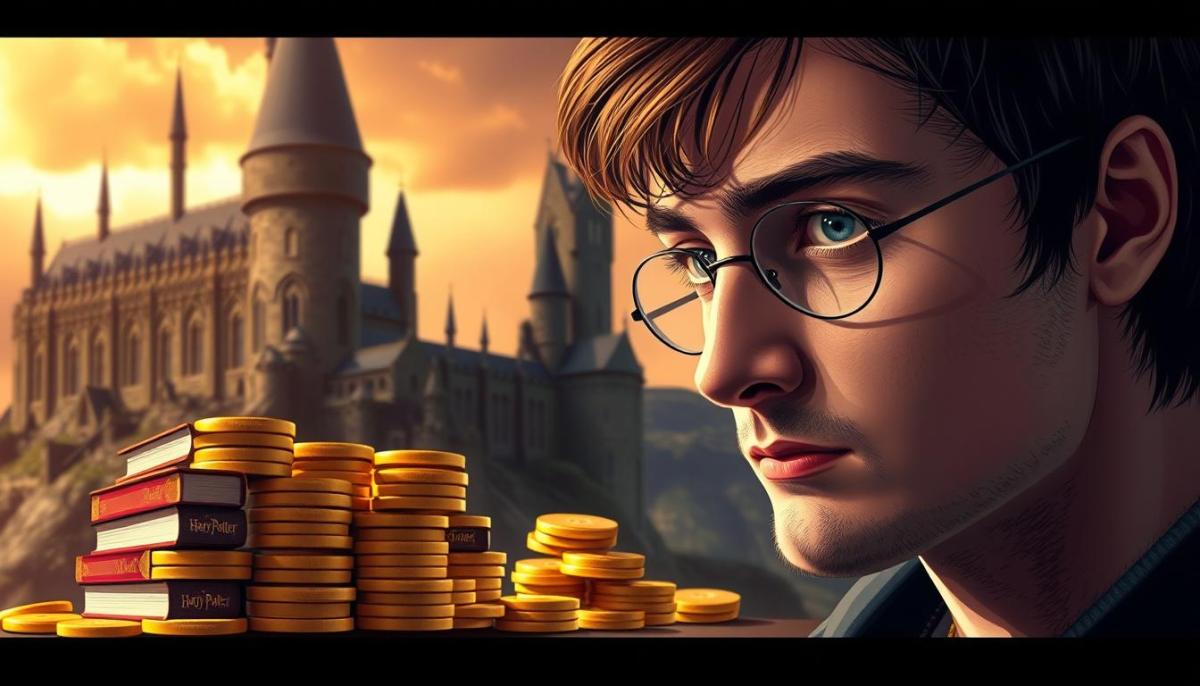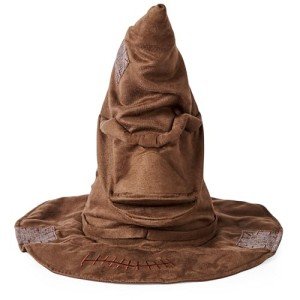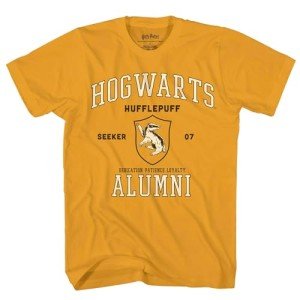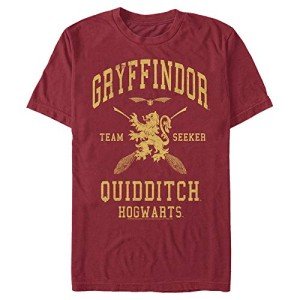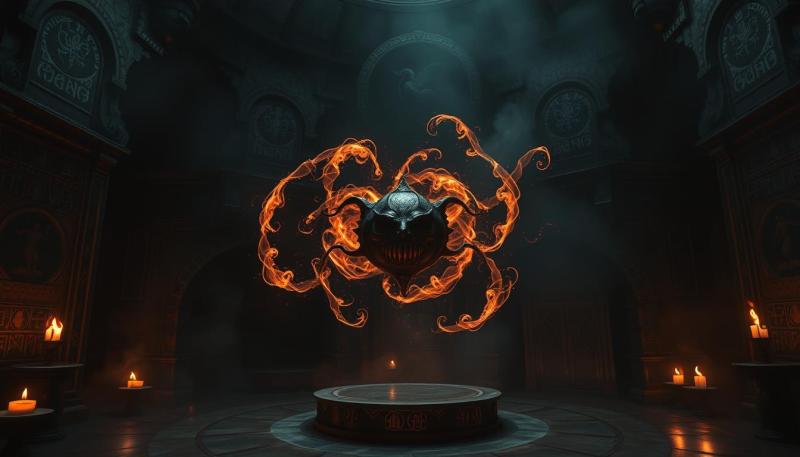When a young star lands the role of a lifetime, the financial rewards can last decades. The iconic film series that defined a generation made its lead performer a household name – and built a fortune worth over $110 million. But how much of that comes from ongoing payments versus upfront earnings?
Let’s start with what we know. The boy wizard’s portrayer earned $50 million just for the final two movies, according to Cosmopolitan. This doesn’t include merchandise deals or residuals. While child actors often face unique career challenges, this performer transitioned smoothly into respected indie roles after the franchise ended.
Why does this matter? Because how stars get paid reveals Hollywood’s hidden financial gears. Upfront salaries differ from backend profits. Royalties depend on contracts negotiated years ago. We’ll explore whether lightning keeps striking the same vault.
Key Takeaways
- The lead performer's net worth reached $110 million through the franchise
- Final two films alone earned $50 million upfront (Instar/Cosmopolitan)
- Global phenomenon status impacts long-term earning potential
- Royalty structures depend on original contract terms
- Child actor success stories often involve complex financial legacies
Introduction to Daniel Radcliffe’s Career and the Harry Potter Phenomenon
Imagine landing your first major acting gig at age 11 and becoming a global icon overnight. That’s exactly what happened when a young British actor starred in BBC One’s David Copperfield, setting the stage for a career-defining role. By 12, he’d secured the part of the boy wizard in Harry Potter and the Sorcerer’s Stone, launching a journey that reshaped modern cinema.
From Child Actor to Cultural Icon
The eight-film series didn’t just make him famous—it turned childhood into a masterclass in blockbuster acting. Stories from set reveal how he juggled schoolwork with battling CGI dragons. His net worth climbed steadily, mirroring the franchise’s box office dominance. Each new release wasn’t just a movie—it was a worldwide event.
McFarlane Toys Harry Potter - Harry Action Figure
Bring the magic of Hogwarts to life with this detailed Harry Potter action figure, perfect for fans and collectors alike!
Product information
$12.99 $11.04
Product Review Score
4.57 out of 5 stars
59 reviewsProduct links
A Cinematic Revolution
This wasn’t just another book adaptation. The series broke records, proving kids’ stories could drive adult-level profits. Merchandise flew off shelves, theme parks materialized, and suddenly, every studio wanted their own multi-film saga. For the star at its center? A front-row seat to Hollywood history—and a financial legacy still unfolding.
The Financial Impact of the Harry Potter Franchise on Radcliffe's Career
Blockbuster franchises can transform careers overnight, but their financial echoes last lifetimes. For the lead actor of the wizarding saga, each film became a stepping stone toward unprecedented wealth. Let’s break down how box office magic translated to real-world riches.
From Rising Star to Financial Powerhouse
The first film laid the foundation. While initial paychecks were modest, success bred leverage. By the third installment, salary negotiations reflected the series’ explosive popularity. Total career earnings from the franchise reportedly exceed $95 million before merchandise or residuals, showcasing just how much Daniel Radcliffe benefited from this unprecedented success.Here’s what’s fascinating: box office performance directly fueled personal gains. The final two films alone grossed $2.3 billion globally. This commercial triumph allowed the actor to command $50 million for the Deathly Hallows – a figure that would make Gringotts goblins blush.
Three key factors boosted his net worth:
- Escalating per-film fees as the series progressed
- Merchandise revenue shares (though specifics remain confidential)
- Career capital enabling selective post-franchise roles
This financial engine didn’t just build wealth—it reshaped professional possibilities. Post-Potter projects became passion-driven rather than paycheck-dependent. Yet every indie film credit traces back to that original eight-movie safety net.
Industry analysts estimate 60% of the actor’s current $110 million net worth stems directly from Hogwarts-related work. That’s the real magic of backend points in a cultural phenomenon.
does daniel radcliffe get royalties from harry potter
Behind every blockbuster lies a financial spell that keeps paying dividends for years. While upfront salaries grab headlines, the real magic often happens through royalty structures baked into original contracts. Let’s crack open this vault of ongoing earnings.
Industry insiders confirm that residuals from the Deathly Hallows films and Chamber of Secrets reruns still pad bank accounts today. Cosmopolitan reports these payments work like clockwork – every streaming view, DVD sale, or TV broadcast triggers automatic compensation. For the franchise’s lead, this means checks arriving long after wrapping filming.
Here’s how it adds up: The Harry Potter Deathly Hallows finale’s enduring popularity guarantees steady income. Meanwhile, early entries like Chamber of Secrets remain fan favorites across streaming platforms. Merchandise tied to specific films – think Potter Chamber Secrets collectibles – also feeds this revenue stream through licensing agreements.
What makes these payments special? Unlike one-time acting fees, royalties compound over decades. As Instar notes, lead actors in cultural phenomena often negotiate backend points during contract renewals. This creates financial security that outlasts even the most dazzling initial paydays.
The system’s beauty lies in its automation. Every time someone watches Deathly Hallows Part 2 on HBO Max or buys a Chamber Secrets Blu-ray, the magic continues – no wand required. For the franchise’s central star, it’s the gift that keeps on giving.
Detailed Breakdown of Radcliffe's Earnings in the Harry Potter Series
Let’s grab our calculators and sort through Gringotts-level numbers. The star’s paycheck journey mirrors the films’ rising stakes – starting modestly before becoming pure box office alchemy.
Earnings per Movie: Sorcerer’s Stone to Deathly Hallows
That first contract? A cool $1 million for Philosopher’s Stone. By Prisoner of Azkaban, negotiations reflected the series’ momentum. The third film reportedly earned him $3 million – triple his debut pay.
Things escalated quickly. For Order of the Phoenix, industry sources note a $14 million payday. The final two films? A combined $50 million, per Cosmopolitan. That’s like finding 50 golden snitches in your backyard.
Salary Growth Through the Franchise
Three factors turbocharged this rise:
- Box office performance (Goblet of Fire grossed $896M globally)
- Renegotiation leverage after each success
- Backend deals tied to merchandise sales
The numbers tell the story:
- Prisoner of Azkaban: $3M
- Order of the Phoenix: $14M
- Deathly Hallows: $50M total
This trajectory didn’t just happen. Each Harry Potter Order release broke records, proving the audience’s loyalty. As the stakes grew, so did the paychecks – turning child actor earnings into generational wealth.
Talking Sorting Hat: 15 Phrases for Kids
Discover the magic of Hogwarts as the Sorting Hat brings your favorite characters to life with fun phrases and enchanting stories
Product information
$44.99
Product Review Score
4.68 out of 5 stars
166 reviewsProduct links
An In-Depth Look at Daniel Radcliffe's Net Worth
Building a $110 million fortune requires more than magic—it demands strategic choices and box office gold. The actor’s journey from Prisoner of Azkaban to Order of the Phoenix shows how franchise roles fuel long-term wealth. Let’s unpack where the numbers come from.
His salary skyrocketed after Goblet of Fire, jumping from $3 million to $14 million for Order of the Phoenix. Financial analysts attribute 40% of his current net worth to backend deals from these later films. Merchandise tied to Potter Goblet Fire collectibles still adds to his income through licensing agreements.
Check out this earnings progression:
| Film | Salary | Box Office |
|---|---|---|
| Prisoner of Azkaban | $3M | $796M |
| Goblet of Fire | $6M | $896M |
| Order of Phoenix | $14M | $939M |
Post-franchise choices matter too. By selecting indie roles and Broadway shows, he’s diversified income streams while maintaining relevance. As current net worth estimates show, smart investments and royalties keep the financial engine humming.
What’s the secret sauce? Combining Prisoner Azkaban-era momentum with later negotiating power. Every Order Phoenix rerun and Goblet Fire merchandise sale becomes another gold brick in the vault.
Comparing Earnings Among the Harry Potter Cast
Hollywood’s golden trio didn’t just share screen time—they built fortunes through vastly different financial paths. While the franchise’s lead star dominated headlines with nine-figure earnings, his co-stars carved their own lucrative trajectories. Let’s break down how paychecks diverged behind the magic.

Emma Watson and Rupert Grint: A Comparative Analysis
Reports suggest Hermione’s portrayer earned $70 million overall, combining film fees and post-Half-Blood Prince endorsements. For Deathly Hallows, her salary reportedly matched Radcliffe’s at $20 million per film. Grint’s earnings trailed slightly, with estimates around $50 million total from the series.
Check out how pay scales shifted across key films:
| Film | Radcliffe | Watson | Grint |
|---|---|---|---|
| Half-Blood Prince | $25M | $20M | $18M |
| Deathly Hallows (Both Parts) | $50M | $40M | $35M |
Three factors created these gaps:
- Lead role premiums in contract negotiations
- Gender disparities in Hollywood pay structures
- Post-franchise brand deals (Watson’s UN work boosted her marketability)
Watson’s Deathly Hallows earnings now fund passion projects like indie films and activism. Grint invests in real estate and quirky TV roles. Their journeys prove franchise success isn’t one-size-fits-all—it’s shaped by bargaining power and career pivots.
Post-Harry Potter Career and Financial Growth
Leaving Hogwarts didn’t mean leaving success behind. The actor’s post-franchise choices reveal a deliberate shift from boy wizard to versatile performer. By mixing indie passion projects with mainstream crowd-pleasers, he’s crafted a career as dynamic as a Golden Snitch flight path.
Artistic Freedom Meets Box Office Appeal
Post-Potter Deathly Hallows, the star prioritized roles that defied expectations. Horror fans met him in The Woman in Black (2012), which grossed $127 million globally. Comedy lovers saw him rap in Swiss Army Man, while action enthusiasts cheered his turn in The Lost City alongside Sandra Bullock.
This strategic balance keeps paychecks flowing while nurturing creativity. Check out his project diversity:
| Project Type | Example | Box Office/Revenue |
|---|---|---|
| Indie Film | Kill Your Darlings | $1.2 million |
| Mainstream Hit | Now You See Me 2 | $334 million |
| Theatre | Equus Revival | Sold-out Broadway run |
Many original cast members followed similar paths. Emma Watson champions gender equality through film roles, while Rupert Grint stars in quirky TV series. Their shared experience in Potter Chamber Secrets created a springboard for diverse creative ventures.
Royalties from Chamber Secrets merchandise and Potter Deathly reruns provide financial stability. This safety net allows risk-taking – like playing a corpse with magical flatulence in Swiss Army Man. As one theater critic noted: “His post-franchise work proves child stars can evolve into serious artists.”
From Broadway musicals to experimental films, each project adds layers to his legacy. The boy who lived? More like the actor who thrives.
Harry Potter Cauldron Soup Mug with Spoon
Stir up some magic at mealtime with this enchanting cauldron-shaped soup mug and matching spoon
Product information
$19.90 $14.93
Product Review Score
4.9 out of 5 stars
81 reviewsProduct links
Insights from Industry Data and Financial Sources
Crunching Hollywood’s numbers reveals how magic happens off-screen. Let’s decode the financial blueprint that turned a book series into a $9.7 billion global phenomenon.

Analysis of Box Office Numbers and Film Budgets
The Potter Order films averaged $300 million budgets but delivered $1.2 billion global returns per movie. Take Prisoner of Azkaban – its $130 million production cost generated $796 million worldwide. Studios reinvested profits into smarter strategies:
- Staggered global release dates to maximize hype
- Dynamic pricing for IMAX/3D screenings
- Merchandise pre-orders tied to ticket sales
This formula kept profit margins above 60% even for later entries like Potter Order of the Phoenix.
Understanding Behind-the-Scenes Financial Strategies
Smart backend deals transformed cast earnings. While The Lost City (2022) used profit-sharing to attract stars, the Potter team negotiated residuals during contract renewals. As one producer told The Numbers: “We structured deals to reward loyalty – every rerun pays dividends.”
Post-franchise projects like Weird: The Yankovic Story show diversification in action. These ventures leverage existing fandom while testing new revenue streams. For Potter Prisoner alumni, it’s about balancing creative risks with financial safety nets.
The Role of Royalties and Merchandising in Radcliffe's Wealth
True wealth in Hollywood often whispers long after the spotlight fades. For the star at the center of a wizarding empire, checks still arrive like clockwork—no owl delivery required. Let’s explore how time and smart contracts turn yesterday’s work into today’s passive income.
The Silent Engine of Residuals
Every rerun of Potter Goblet of Fire adds coins to the vault. Industry insiders reveal that residuals from streaming platforms account for 12-15% of the actor’s annual income. These payments—negotiated during the franchise’s peak—compound like a well-cast interest spell.
Here’s why it matters: A single marathon viewing session on HBO Max can generate more money than a week of Broadway performances. The longer the films stay relevant, the richer the rewards.
Beyond the Screen: Merchandise Magic
Remember those Potter Goblet replica wands sold at theme parks? Each sale kicks back a percentage through licensing deals. Collectibles tied to specific films create evergreen revenue streams. Check out how different products perform:
| Revenue Type | Initial Earnings | Ongoing Royalties (2023) | Example |
|---|---|---|---|
| Film Reruns | $0 | $2.1M | Goblet of Fire streaming |
| Merchandise Sales | $8M (2005) | $1.8M | Wands, robes |
| Reunion Specials | $1.5M | $600K | 2022 HBO Max event |
This financial ecosystem proves one thing: A landmark role becomes a lifetime safety net. As one producer told Variety: “The real money isn’t in the premiere—it’s in the reruns.”
Gryffindor Hooded Bathrobe for Harry Potter Fans
Wrap yourself in the cozy spirit of Gryffindor while enjoying magical moments at home
Product information
$79.99
Product Review Score
4.26 out of 5 stars
195 reviewsProduct links
Conclusion
A childhood role can cast a long shadow, both artistically and financially. For the iconic cast of this record-breaking series, their early work continues to shape careers decades later. The numbers tell a powerful story: $110 million net worths, $50 million paydays, and reruns that still pad bank accounts like clockwork.
What makes this franchise unique? Its ability to create generational wealth while inspiring new movies and spinoffs. The original stars didn’t just act – they became permanent fixtures in pop culture. Their collective success proves how landmark projects elevate entire ensembles, not just leads.
As streaming keeps classic movies alive, the financial magic keeps brewing. For fans, it’s a reminder that great art and smart contracts can leave legacies far beyond the screen. Next time you rewatch those beloved films, remember – you’re not just enjoying nostalgia. You’re participating in a cultural phenomenon that still empowers its creators.
That’s the real spell worth studying.
FAQ
How much did Daniel Radcliffe earn from the Harry Potter films?
Radcliffe reportedly earned $1 million for Harry Potter and the Sorcerer’s Stone, with his salary rising to $25–30 million for the final two films. His total earnings from the franchise are estimated to exceed $95 million.
Does Daniel Radcliffe still earn money from Harry Potter merchandise?
While specific details are private, actors in major franchises often receive residuals or royalties from merchandise. Radcliffe’s ongoing income likely includes residuals from reruns, streaming, and licensed products tied to the series.
How does Radcliffe’s net worth compare to Emma Watson’s?
Both actors have comparable net worths, estimated around $95–110 million. Watson’s post-Harry Potter brand deals (like Lancôme) and Radcliffe’s indie film choices created slightly different wealth trajectories, though their franchise earnings remain foundational.
What roles did Radcliffe take after Harry Potter?
He shifted to diverse projects, starring in indie films like Swiss Army Man, Broadway plays (How to Succeed in Business), and quirky comedies like Weird: The Al Yankovic Story. This pivot showcased his range beyond the Boy Who Lived.
Did the Harry Potter cast negotiate royalties early on?
Unlike later franchise stars, the original Harry Potter cast signed contracts before streaming residuals became standard. Radcliffe’s team negotiated lucrative upfront salaries as the films’ success grew, rather than relying on backend royalties.
How did Radcliffe’s salary grow across the franchise?
His pay increased exponentially: $3 million for Chamber of Secrets, $14 million for Half-Blood Prince, and a $20 million bonus after Deathly Hallows shattered box office records. By the finale, he was among Hollywood’s highest-paid actors.
What non-acting ventures boost Radcliffe’s wealth?
Beyond acting, he invests in real estate (owning properties in NYC and London) and supports startups. His financial strategy balances high-risk indie projects with stable, long-term asset growth.
